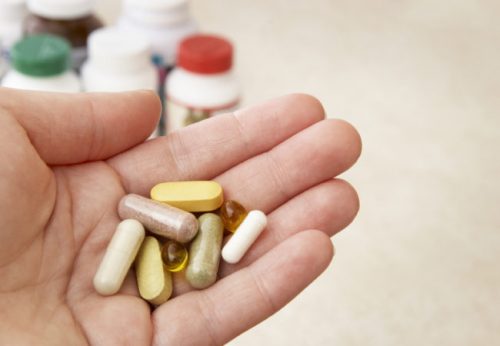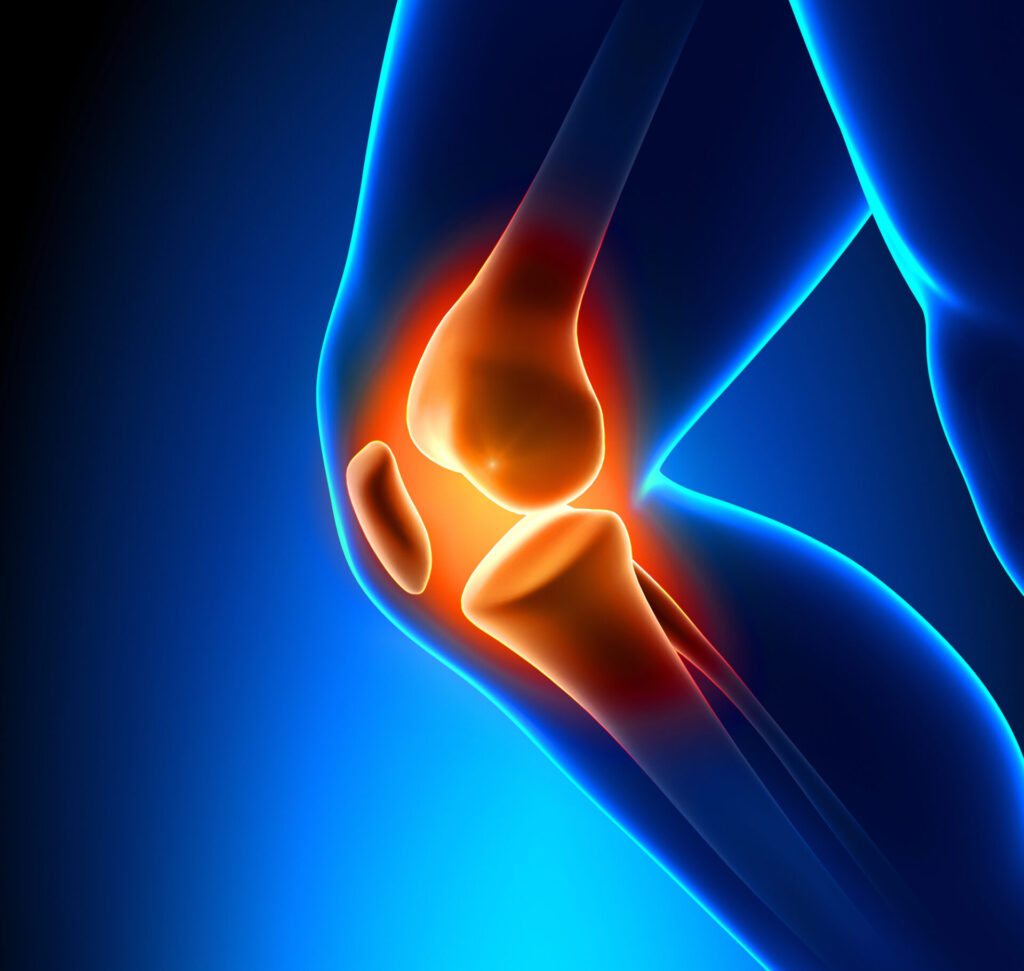How B Vitamins Can Be Transformative for Erection Quality in Individuals Poorly Responsive to Phosphodiesterase Type-5 Inhibitors.
Numerous studies have shown a relationship between homocysteine (HCY) elevation and erectile dysfunction (ED). Elevated levels of HCY are associated with endothelial dysfunction and uncoupling of the nitric oxide synthase enzyme;[1],[2] thus, we also see a relationship between hyper-HCY and conditions with vascular underpinnings, including cardiovascular disease,[3] cognitive decline and Alzheimer’s disease,[4],[5] and chronic kidney disease.[6] High levels of HCY also create oxidative stress by a variety of mechanisms,[7],[8],[9] hence its broad relationship with many chronic conditions including depression and metabolic disease.[10],[11],[12],[13]
A 2018 systemic review and meta-analysis of nine studies including 1,320 men found that the men with ED were approximately twice as likely to have elevated levels of HCY.[14] Elevated homocysteine has even been shown to be an independent risk factor for ED, particularly when it exceeds 12.65 μmol/L.[15] It has been reported that HCY levels above 14.3 μmol/L increases the risk of ED nearly fivefold in men with diabetes.[16]
Proper metabolism of HCY requires numerous B vitamins and depends on the functionality of several enzymes. Depletion of vitamin B12 or folate can have a major impact on HCY, increasing serum HCY by a factor of three to 20 times the upper normal limit.[17],[18] Low levels of folic acid have been shown in men with ED in multiple clinical studies.[19],[20] In addition to assessing B12 and folate levels, evaluation of serum methylmalonic acid (MMA) is important to distinguish between B12 and folate deficiencies. When MMA is not elevated but HCY is, a deficiency of folate is indicated, while if both are elevated, B12 is deficient.[21] However, if both are elevated, folate deficiency cannot be ruled out.
Of these two B vitamins, folate stands out as an intervention for specifically addressing ED, with multiple clinical studies supporting its use. In men ages 30 to 60 diagnosed with idiopathic vasculogenic ED, supplementation of 500 µg of folic acid daily for three months significantly improved median International Index of Erectile Function (IIEF-5) scores from 6 to 14.[22] Parameters related to penile blood velocity also had highly significant improvements with the intervention. Although it was not a criteria for study inclusion, HCY levels were significantly higher at baseline in individuals diagnosed with ED (median of 2.84 μmol/L) compared to the control population, and were significantly reduced with the intervention to a median value of 0.19 μmol/L.
Folic acid has been shown in a randomized, double-blind, placebo-controlled trial to improve ED scores in men with type 2 diabetes (T2D) when taken as an adjunctive treatment to a phosphodiesterase type 5 inhibitor (PDE5I). After being given folic acid at a dose of 5 mg a day for three months, an improvement in mean IIEF-5 scores from 11.65 to 16.80 was seen in those receiving both interventions, with final scores also being significantly better than those in the placebo group who received only the PDE5I medication.[23]
Folic acid also has been investigated in combination with inositol in patients with T2D. Inositol has been described as being functionally similar to B vitamins, but, because the body produces it, it is not an essential dietary substance.[24] In the individuals with T2D, those receiving 400 µg of folic acid in combination with 4 g of myoinositol daily for 12 weeks had significantly improved IIEF-5 scores from 12 to 20, while there were no significant improvements in the placebo group.[25]
One reason why supplemental folate is a key factor for homocysteine metabolism relates to the enzyme methylenetetrahydrofolate reductase (MTHFR). MTHFR converts methylenetetrahydrofolate to its more biologically active form, 5-methyltetrahydrofolate. A variant of the MTHFR enzyme, known as the 677TT polymorphism, has been shown to be more common in males with vasculogenic ED, particularly those who experience the problem at a young age.[26] With this genetic variant, homocysteine metabolism is compromised as the “gears” that must “rotate” to convert it to methionine in essence get stuck because there are inadequate amounts of 5-MTHF. One can push the system to cycle again by adding additional folate, ideally in the form of 5-MTHF to bypass the poorly functioning MTHFR enzyme.[27]
One study specifically considered the impact of folate and vitamin B6 supplementation on erectile function in individuals with the MTHFR 677TT and heterozygous 677CT variants who were nonresponsive to PDE5I treatment.[28] After an initial intervention of treatment with the PDE5I for two months, a group of 18 individuals who were PDE5I nonresponders were selected for the nutritional intervention, which consisted of 15 mg of folic acid/day and 600 mg of pyridoxine hydrochloride (vitamin B6) twice weekly. At the re-evaluation point six weeks later, the combination of folic acid and vitamin B6 was found to improve IIEF-5 scores in 88.9% of this population.
Given their essentiality for all aspects of physical function, B vitamins should come high at the list of nutritional considerations for any man dealing with erectile dysfunction, particularly if it comes at a young age. Beyond this, there are numerous other nutrients that enhance nitric oxide production, as well as French Maritime pine bark extract, which both offer additional benefits for cardiovascular health.
Carrie Decker, ND, graduated with honors from the National University of Natural Medicine in Portland, OR. Prior to becoming a naturopathic physician, Dr. Decker was an engineer and obtained graduate degrees in biomedical and mechanical engineering from the University of Wisconsin-Madison and University of Illinois at Urbana-Champaign, respectively. She continues to enjoy academic research and writing and uses these skills to support integrative medicine education as a writer and contributor to various resources.
[1] Stühlinger MC, et al. Homocysteine impairs the nitric oxide synthase pathway: role of asymmetric dimethylarginine. Circulation. 2001 Nov 20;104(21):2569-75.
[2] Jones RW, et al. Cavernosal dysfunction in a rabbit model of hyperhomocysteinaemia. BJU Int. 2005 Jan;95(1):125-30.
[3] Wald DS, et al. Homocysteine and cardiovascular disease: evidence on causality from a meta-analysis. BMJ. 2002 Nov 23;325(7374):1202.
[4] Ford AH, et al. Homocysteine, depression and cognitive function in older adults. J Affect Disord. 2013 Nov;151(2):646-51.
[5] Seshadri S, et al. Plasma homocysteine as a risk factor for dementia and Alzheimer’s disease. N Engl J Med. 2002 Feb 14;346(7):476-83.
[6] Chen CH, et al. High homocysteine, low vitamin B-6, and increased oxidative stress are independently associated with the risk of chronic kidney disease. Nutrition. 2016 Feb;32(2):236-41.
[7] Prudova A, et al. S-adenosylmethionine stabilizes cystathionine beta-synthase and modulates redox capacity. Proc Natl Acad Sci U S A. 2006 Apr 25;103(17):6489-94.
[8] Handy DE, et al. Homocysteine down-regulates cellular glutathione peroxidase (GPx1) by decreasing translation. J Biol Chem. 2005 Apr 22;280(16):15518-25.
[9] Jakubowski H. Homocysteine thiolactone: metabolic origin and protein homocysteinylation in humans. J Nutr. 2000 Feb;130(2S Suppl):377S-381S.
[10] Hu Y, et al. Clinical study of serum homocysteine and non-alcoholic fatty liver disease in euglycemic patients. Med Sci Monit. 2016 Nov 2;22:4146-51.
[11] Tiemeier H, et al. Vitamin B12, folate, and homocysteine in depression: the Rotterdam Study. Am J Psychiatry. 2002 Dec;159(12):2099-101.
[12] Meigs JB, et al. Fasting plasma homocysteine levels in the insulin resistance syndrome: the Framingham offspring study. Diabetes Care. 2001 Aug;24(8):1403-10.
[13] Schachter M, et al. Insulin resistance in patients with polycystic ovary syndrome is associated with elevated plasma homocysteine. Hum Reprod. 2003 Apr;18(4):721-7.
[14] Sansone A, et al. Serum Homocysteine Levels in Men with and without Erectile Dysfunction: A Systematic Review and Meta-Analysis. Int J Endocrinol. 2018 Aug 7;2018:7424792.
[15] Zhang Z, et al. Elevated serum homocysteine level as an independent risk factor for erectile dysfunction: a prospective pilot case-control study. Andrologia. 2017 Aug;49(6).
[16] Al-Hunayan A, et al. Hyperhomocysteinemia is a risk factor for erectile dysfunction in men with adult-onset diabetes mellitus. Urology. 2008 May;71(5):897-900.
[17] Kang SS, et al. Homocysteinemia due to folate deficiency. Metabolism. 1987 May;36(5):458-62.
[18] Stabler SP, et al. Elevation of total homocysteine in the serum of patients with cobalamin or folate deficiency detected by capillary gas chromatography-mass spectrometry. J Clin Invest. 1988 Feb;81(2):466-74.
[19] Karabakan M, et al. Association between serum folic acid level and erectile dysfunction. Andrologia. 2016 Jun;48(5):532-5.
[20] Attia AAA, et al. Low serum folic acid can be a potential independent risk factor for erectile dysfunction: a prospective case-control study. Int Urol Nephrol. 2019 Feb;51(2):223-9.
[21] Savage DG, et al. Sensitivity of serum methylmalonic acid and total homocysteine determinations for diagnosing cobalamin and folate deficiencies. Am J Med. 1994 Mar;96(3):239-46.
[22] Elshahid ARM, et al. Folic acid supplementation improves erectile function in patients with idiopathic vasculogenic erectile dysfunction by lowering peripheral and penile homocysteine plasma levels: a case-control study. Andrology. 2020 Jan;8(1):148-53.
[23] Hamidi Madani A, et al. Assessment of the efficacy of combination therapy with folic acid and tadalafil for the management of erectile dysfunction in men with type 2 diabetes mellitus. J Sex Med. 2013 Apr;10(4):1146-50.
[24] Reynolds JEF. Martindale: The Extra Pharmacopoeia. 30th ed. King of Prussia (PA): Rittenhouse Book Distributors; 1993.
[25] Agostini R, et al. Myoinositol/folic acid combination for the treatment of erectile dysfunction in type 2 diabetes men: a double-blind, randomized, placebo-controlled study. Eur Rev Med Pharmacol Sci. 2006 Sep-Oct;10(5):247-50.
[26] Safarinejad MR, et al. Role of methylenetetrahydrofolate reductase gene polymorphisms (C677T, A1298C, and G1793A) in the development of early onset vasculogenic erectile dysfunction. Arch Med Res. 2010 Aug;41(6):410-22.
[27] Vidmar Golja M, et al. Folate Insufficiency Due to MTHFR Deficiency Is Bypassed by 5-Methyltetrahydrofolate. J Clin Med. 2020 Sep 2;9(9):2836.
[28] Lombardo F, et al. Treatment of erectile dysfunction due to C677T mutation of the MTHFR gene with vitamin B6 and folic acid in patients non responders to PDE5i. J Sex Med. 2010 Jan;7(1 Pt 1):216-23.





